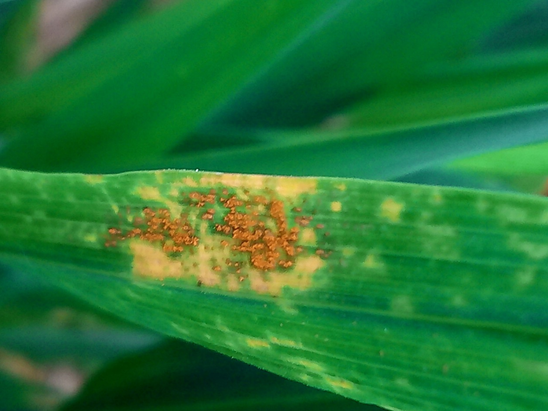Winter Wheat Growth Stage & Disease Update – Late June 2020
26 June 2020The table below shows the growth and disease observations in SRUC’s monitored crops. This data is generated in commercial crops in your area so is indicative of the disease pressure and growth stages on farms at the moment.
| Winter wheat | Average | Maximum | Minimum |
|---|---|---|---|
| Crop Growth Stage | 60 | 69 | 47 |
| Mildew | 1.5 | 4 | 0 |
| Septoria tritici | 06 | 3 | 0 |
| Yellow rust | 0.1 | 0.1 | 0 |
Diseases
The wet and humid weather is letting disease start to tick over. Yellow rust levels in SRUC’s untreated trials have picked up but commercial crops are now within the safety net of fungicide programmes and there have not been many examples of stretches and delays to programmes to let it in.
Septoria is still confined to lower leaves for the most part but will be working its way up now that it has wet conditions. There is still less disease in later drilled crops, and although some of these still look patchy, side tillers are starting to catch up and reach the up of the canopy.
Ear sprays have two main aims: – to continue foliar disease protection on the upper leavers and to protect against ear diseases and mycotoxins.
It is essential that mycotoxin risk assessments are carried out for all wheat entering the food chain. The risk assessment is available online from AHDB. This should be started before flowering so that you can include the risk in your T3 fungicide plans (a nice example of IPM practice).
It captures the main drivers of fusarium risk which are wet weather at flowering and then wet weather over grain filling and ripening. A record should then be kept of rainfall at flowering and over-ripening as this is the main driver of risk and accounts for almost 60% of the maximum risk score that would be possible. We are at inherently lower risk in Scotland because many of the mycotoxin forming Fusarium species like warm temperatures, but many do occur widely in Scotland so we shouldn’t be complacent. Trash is another risk factor so direct drilled crops are at slightly greater risk.
Sign up to the FAS newsletter
Receive updates on news, events and publications from Scotland’s Farm Advisory Service

